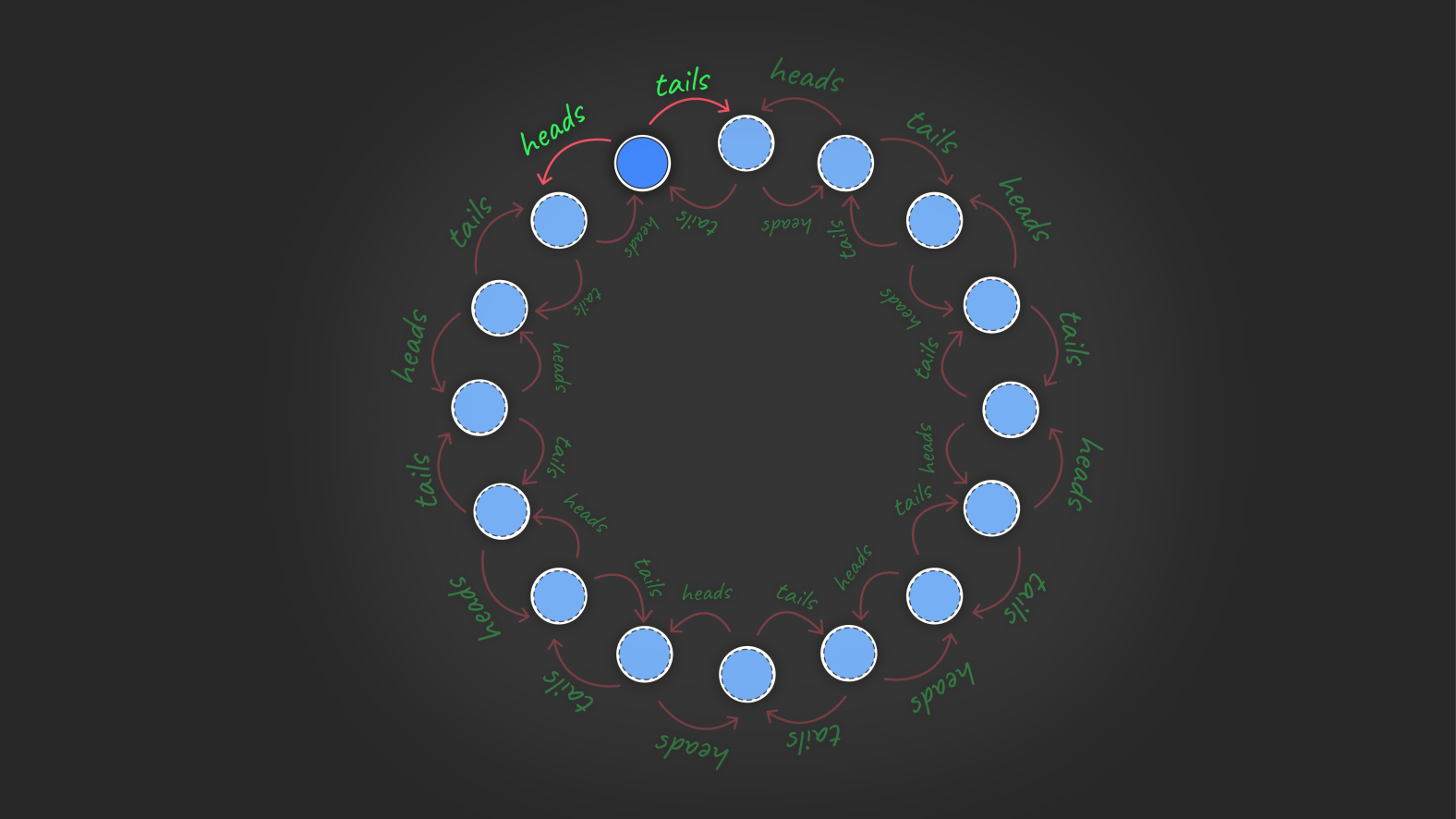
Consider a particle that moves along a set of \(m + 1\) nodes, labeled \(0, 1, . . . ,m\), that are arranged around a circle. At each step the particle is equally likely to move one position in either the clockwise or counterclockwise direction. That is, if \(X_{n}\) is the position of the particle after its nth step then \[P\{Xn+1 = i + 1|Xn = i\} = P\{Xn+1 = i − 1|Xn = i\} = \frac{1}{2} : i + 1 \equiv 0\] When \(i = m\), and \(i − 1 \equiv m\) when \(i = 0\). Suppose now that the particle starts at 0 and continues to move around according to the preceding rules until all the nodes \(1, 2, ..., m\) have been visited. What is the probability that node \(i: i = 1, ..., m\) is the last one visited?
There is a rather intuitive way to understand this problem.
Given that we understand how the probability that any one of them could be last is equal to, it is time for some simulations 😀
Given below are four simulations of the scenarios. All of them have been run for 1000 steps and you can see the dynamic state of the system rapidly fluctuating as it tries to make a roundabout
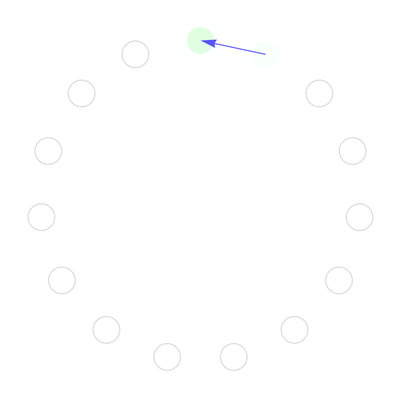
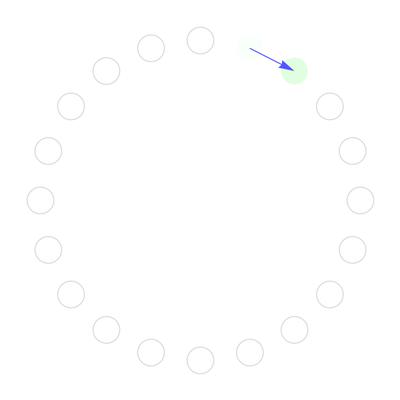
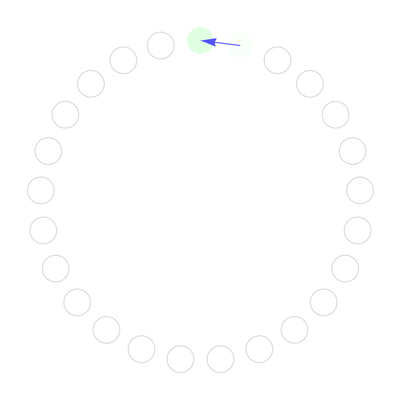
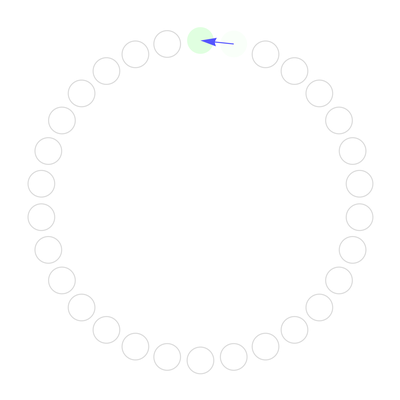
ClearAll[circumventer, circleSequence, particleInCircle, particleInCircleExport];
circumventer[n_, size_: 10] := Mod[Abs[size + n], size]
circleSequence[n_: 10, radius_: 10, activeIn_List] :=
Module[{active = activeIn + 1},
Table[{
If[active[[2]] == r, {Opacity[1.0], Green, Disk[{radius Sin[2 r \[Pi]/n], radius Cos[2 r \[Pi]/n]}]},
If[active[[1]] == r, {Opacity[0.2], Green, Disk[{radius Sin[2 r \[Pi]/n], radius Cos[2 r \[Pi]/n]}]},
{Opacity[1.0], Green,Circle[{radius Sin[2 r \[Pi]/n], radius Cos[2 r \[Pi]/n]}]}]]}, {r, 1, n}]
~Join~
{Lighter@Blue, Arrow[{radius {Sin[2 active[[1]] \[Pi]/n], Cos[2 active[[1]] \[Pi]/n]}, radius {Sin[2 active[[2]] \[Pi]/n],
Cos[2 active[[2]] \[Pi]/n]}}]}
]
particleInCircle[\[Gamma]_: 10, sample_: 1000] :=
Module[{preverse = {0}, simulation, pairs}, Table[AppendTo[preverse, RandomChoice[{-1, 1}]], sample];
simulation = circumventer[#, \[Gamma]] & /@ Accumulate[preverse];
pairs = Transpose[{Drop[simulation, -1], Rest[simulation]}];
Manipulate[
Graphics[circleSequence[\[Gamma], 12, pairs[[r]]], ImageSize -> 350], {r, 1, Length@pairs, 1}]]
particleInCircleExport[\[Gamma]_: 10, sample_: 1000] :=
Module[{preverse = {0}, simulation, pairs}, Table[AppendTo[preverse, RandomChoice[{-1, 1}]], sample];
simulation = circumventer[#, \[Gamma]] & /@ Accumulate[preverse];
pairs = Transpose[{Drop[simulation, -1], Rest[simulation]}];
Table[Graphics[circleSequence[\[Gamma], 12, pairs[[r]]], PlotRange -> {{-15, 15}, {-15, 15}}], {r, 1, Length@pairs, 1}]]
Export[StringReplace[NotebookFileName[], ".nb" -> "_animation_" <> ToString[#[[1]]] <> "_" <> ToString[#[[2]]] <> ".gif"],
particleInCircleExport[#[[1]], #[[2]]], ImageSize -> 400, ImageResolution -> 300, "DisplaDurations" -> 0.2] & /@
{{15, 1000}, {20, 1000}, {25, 1000}, {30, 1000}}